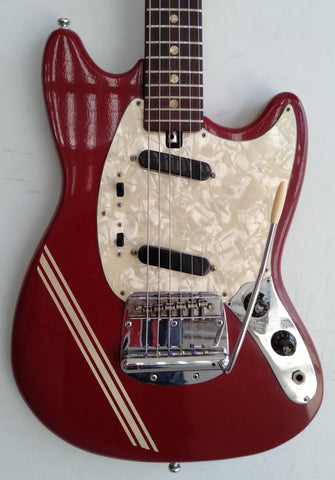

It's different, and it doesn't have a lot of bass, but it actually sounds good. This Teisco amp uses four 6" speakers instead. Most guitar amplifiers designed around a pair of 6V6GT output tubes use a single 10" or 12" speaker. Unauthorized replication or use is strictly prohibited.Description TEISCO 74R guitar amp (1960s, black-on-red cover) - Four small speakers ( 20.54.38 by Ian Abbott).jpg All copyrights are by the author and Vintage Guitar magazine. This article originally appeared in VG ‘s October 2014 issue. The EB-200 (middle) as seen in a 1965 brochure. The EB-220 in sunburst, from a 1966 catalog. Still, they stand as great examples of cheapo models that umpteen babyboomers played as kids. only briefly, as the company adapted to pursue emerging trends. Teisco Del Rey guitars and basses were marketed in the U.S. The separate bridge was still covered by a plate that included foam for muting, and the trapeze tailpiece had an oval-shaped portion where the strings anchored. The top of the 200B’s body was a bit crowded, with two pickups, f-shaped sound holes, a thumbrest, a finger rest, master Volume and Tone controls, and a three-way rotary switch on the treble cutaway. The EP-200B had 21 frets, like its peers and predecessors. Newer models began to exhibit ordinary dot markers on the fretboard instead of edge-mounted blocks. In ’66, Teisco introduced the EP-200B, a short-scale thinline hollowbody with offset body waists and offset cutaway horns, a la Fender’s Jazzmaster and Jazz Bass. The “stripes” on the pickguard are faded but still visible. Other solidbody basses with different body silhouettes, such as the EB-220 (seen here in metallic blue) also appeared by that year note the partial German carve around the top of the body. By ’66, the headstock of most Teisco basses (solidbody and thinline) had been given a three-plus-one tuner configuration, while most electric guitars in the line had a four-plus-two layout. (RIGHT) An EB-220 with brushed-metal pickguard.Ī four-page Teisco Del Rey brochure from early 1965 described the two rocker switches as “individual noiseless velvet touch on/off switches” that controlled “Two ultra high sensitive pickups.” The text further notes that, “Brushed satin metal plates protect the body finish,” a reference to not only the pickguard, but a plate on the headstock (which, on some instruments, was white plastic).īy the following year, many Teisco Del Rey solidbody guitars and basses (and associated brands) were given striped brushed-metal pickguards their matte finish applied to reflect light in two directions. Under the top edge of the plate was a piece of grayish-green foam that muted the strings.


The bridge/tailpiece was under a plate that attached with a single screw. The 21-fret rosewood fretboard was shown with rectangular position markers along the bass side and double blocks (one along the treble side) at the 12th fret. The headstock has an oversized silhouette that exudes an Egyptian-pharaoh vibe, and the crown on the logo plate alludes to the “Del Rey” (Spanish for “of the king”) portion of the name. One of the more-seen Teisco Del Rey basses thumped in garages across the country was the solidbody EB-200, a simple, short-scale instrument with practical (and interesting) aesthetic features. market, changed the brand name to Teisco Del Rey. Which means, of course, that an untold number of American teenagers played instruments like these.ĭuring that era, Teisco instruments were imported from Japan by Westheimer Sales, a distributor that, for the U.S. Teisco Del Rey basses from the 1960s are exemplary of the Japanese-made instruments that swept into the American market like a tsunami during the “guitar boom” – and were the primary contributor to the demise of America’s budget-guitar industry. Two of the finishes offered on the EP-200B, circa 1966.


 0 kommentar(er)
0 kommentar(er)
